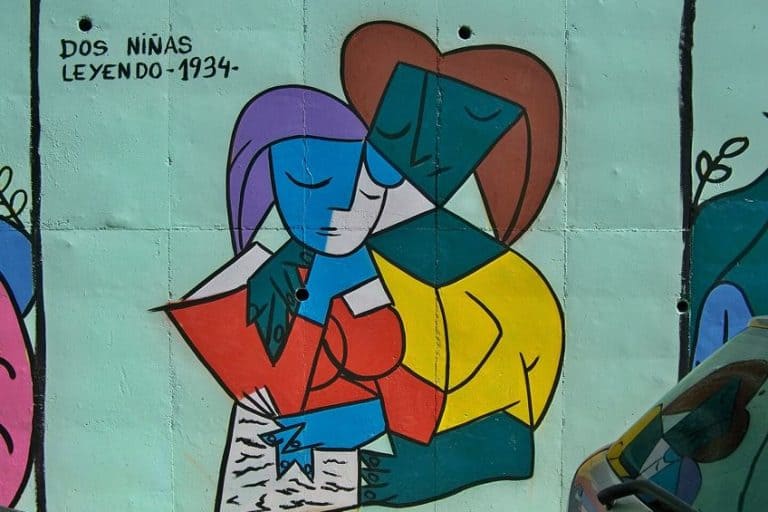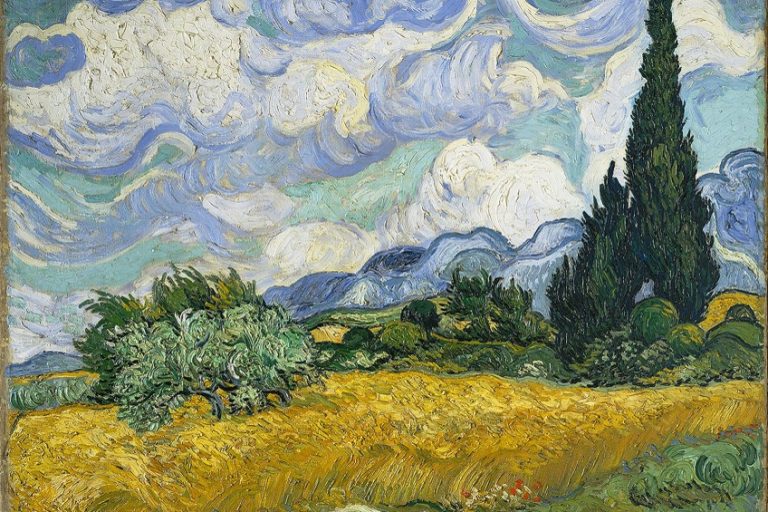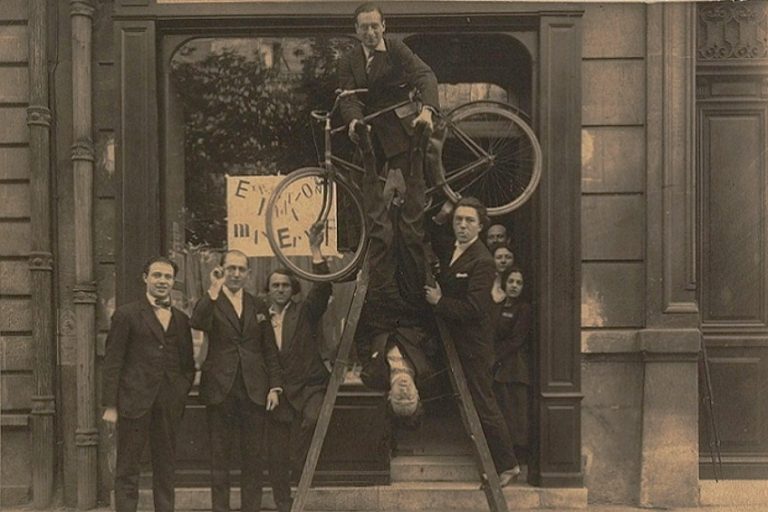“Ivan the Terrible and His Son” by Ilya Repin – An Analysis
The Ivan the Terrible and his son Ivan story is not only gut-wrenching, but also a harrowing tale of the inextricability of love and loss. This article will discuss this story in more detail based on Ivan the Terrible and His Son (c. 1883 – 1885) painting by the prestigious Russian Realist painter, Ilya Repin.
Artist Abstract: Who Was Ilya Yefimovich Repin?
Ilya Yefimovich Repin was a Russian artist who was active during the 19th century. He was born in the city of Chuhuiv in Ukraine on July 24, 1844, and died on September 29, 1930, in Kuokkala in Finland. He had an interest in art from a young age and studied (or apprenticed) under Ivan Bunakov. His studies included the Imperial Academy of Arts located in Saint Petersburg.
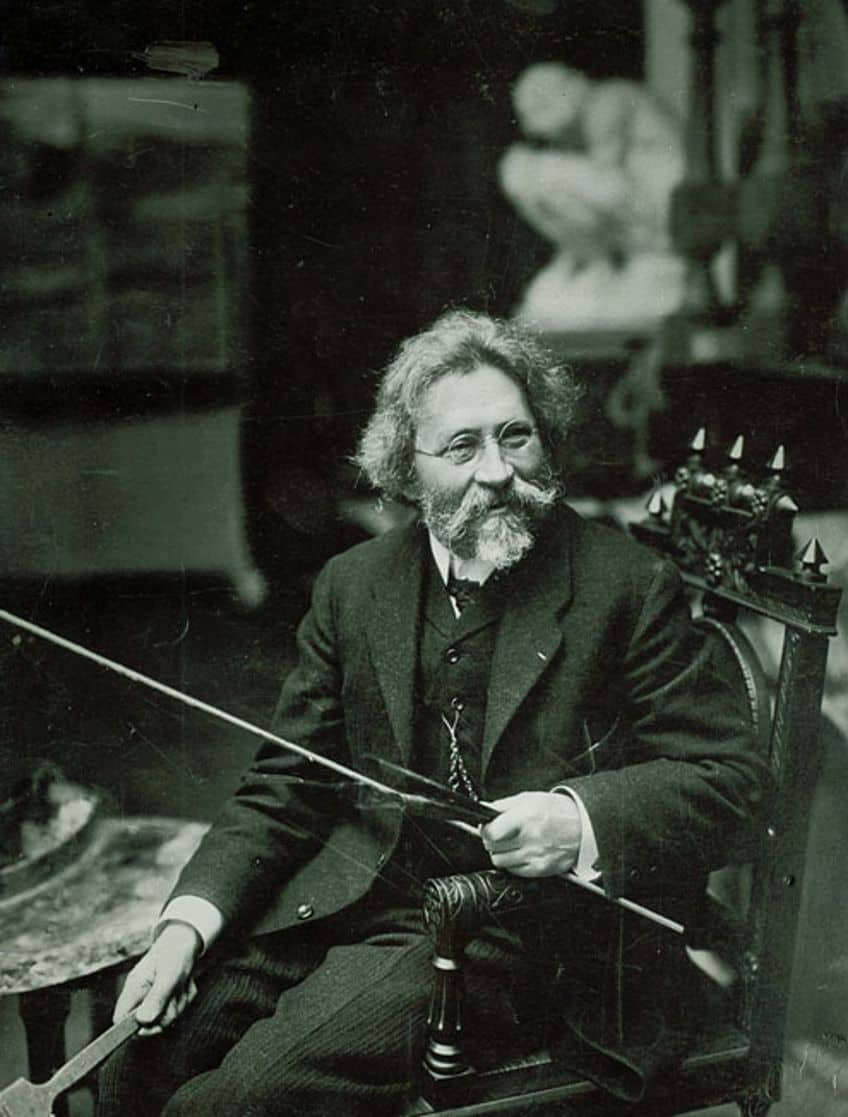
He met a variety of artists and teachers throughout his artistic career and traveled to numerous countries, including Paris where he was influenced by techniques of the Impressionist art movement. Several of his main areas of artistic focus were on the Realist genre, portrait, and historical artworks that would explore social and political ideas. Some of his paintings include Barge Haulers on the Volga (1870 – 1873), Religious Procession in Kursk Province (1880 – 1883), and They Did Not Expect Him (1884 – 1888).
Ivan the Terrible and His Son (c. 1883 – 1885) by Ilya Repin in Context
| Artist | Ilya Yefimovich Repin |
| Date Painted | c. 1883 – 1885 |
| Medium | Oil on canvas |
| Genre | History painting |
| Period/Movement | Realism |
| Dimensions (cm) | 199.5 x 254 |
| Series/Versions | N/A |
| Where Is It Housed? | Tretyakov Gallery, Moscow, Russia |
| What It Is Worth | Bought by Pavel Tretyakov in 1885 (the price is uncertain) |
The article below will discuss the famous Ivan the Terrible painting from around 1885 by Ilya Repin. It will start with a contextual analysis around the question, “Who is Ivan the Terrible?”, who the Russian artist Ilya Repin was, and what the socio-political factors were that influenced him to paint it?
This will be followed by a formal analysis providing a visual description of the subject matter in more detail and the compositional art elements and principles that give this oil on canvas its raw and real appearance.
Contextual Analysis: A Brief Socio-Historical Overview
First, who is Ivan the Terrible, the name referred to in the Ivan the Terrible painting by Ilya Repin? He is part of the main subject matter of this painting; however, he was, in real life, the Tsar of Russia, and acted from the years 1547 to 1584.
His full name was Ivan IV Vasilyevich, but he was also known as “Ivan Grozny”, which really meant “fearsome” or “awe-inspiring”. According to numerous sources, the word “terrible” is a translation of the previously mentioned words, and its modern meaning of the word has potentially become confused with the truer meaning that Ivan was a “formidable” figure.

Before we get to why Ilya Repin portrayed the Russian Tsar in the Ivan the Terrible painting, let us explore a bit more context around him and some of his great, and terrible, accomplishments, namely the start of a standing army, revising and instating new law codes, for example, the Sudebnik of 1550, the Oprichnina policy, and the Russian parliament called the Zemsky Sobor, among many others. He was also involved in numerous wars that he lost and won.
Apart from Ivan the Terrible’s accolades as a Russian ruler, he was also known for his strong personality, and what many scholarly sources have stated might have been mental instabilities or insanity.
Additionally, some have suggested that he may also have had bipolar disorder or temporal lobe syndrome.
The Ivan the Terrible and His Son Ivan Story
Ivan the Terrible’s temper also created war within his own home leading to the death of his son Ivan Ivanovich, which has become a famous story in Russian history and the story portrayed in Ilya Repin’s painting. But why did Ivan kill his own son?
It is important to note that there are numerous scholarly theories about why Ivan the Terrible killed his son, and many are related to their military and political disagreements, which caused Ivan the Terrible to lash out at his son in anger.
However, the commonly held interpretation of Ivan the Terrible and his son Ivan story is that the Tsar hit his son with staff after his son approached him about assaulting his wife, Yelena Sheremeteva, for wearing indecent clothing (some sources also describe she was in her underwear). His son’s wife was also pregnant at the time, and the assault on her reportedly caused a miscarriage.
When Ivan’s son tried to either stop his father during this altercation or approach him about what occurred, his father reportedly hit him on the head with his staff causing a fatal head wound. However, Ivan’s son died several days after, on November 19, 1581.
When his father realized what had happened, he was reportedly overcome with guilt and sorrow.
The Inspiration Behind the Ivan the Terrible Painting
The painting Ivan the Terrible and His Son by Ilya Repin was inspired by three often referred to political and social events during the early 1880s. As a reminder, this was during Repin’s time, and the Ivan the Terrible and his son Ivan’s story took place in 1581.
Additionally, Repin was also influenced by the idea of bloodiness, which he witnessed around him, not only in society but also in other paintings at exhibitions he frequented. Bloodshed was prevalent during this time and something Repin and most people in society were exposed to.
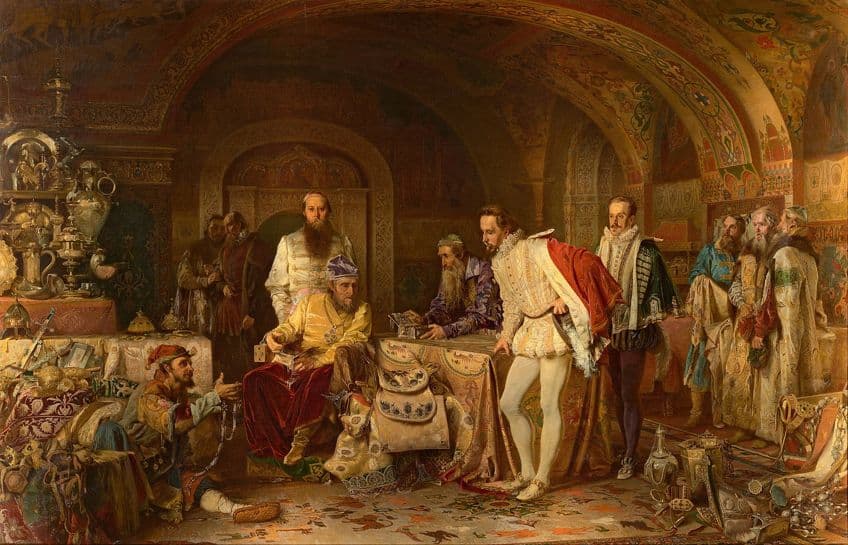
The first notable event that inspired Repin’s Ivan the Terrible painting was the assassination of the Russian Emperor Alexander II on March 13, 1881, in Saint Petersburg. The emperor died from a bombing by Ignaty Loakhimovich Grinevitsky (otherwise also named Ignacy Hryniewiecki) who was part of an organization called Narodnaya Volya or the “People’s Will”. This was a revolutionary populist group that aimed to usurp the tsardom through terrorist attacks.
Repin was also influenced by the music from the composer Nikolai Andreyevich Rimsky-Korsakov, notably his composition titled Antar (1868), which was an Arabian-based story by the writer Osip Ivanovich Senkovsky. The second movement within Antar called Vengeance reportedly reminded Repin of Ivan the Terrible and he wondered how he could make visual the essence he heard when listening to the piece.
From the assassination of the emperor to musical compositions to bullfights, which Repin reportedly watched in Europe in Spain during 1883. Undoubtedly, witnessing the bullfights and the inevitable bloodshed left an imprint on Repin’s mind and artistic processes.
Ivan the Terrible Painting: A Controversy from the Get-Go
Ivan the Terrible and His Son Ivan painting was publicly displayed in 1885, however, it was banned from display due to its bloody subject matter; reportedly, Emperor Alexander III banned the painting in April of 1885. It was also the first painting to be censored in Russia. The Russian art collector Pavel Tretyakov bought Ivan the Terrible and His Son Ivan painting, but reportedly could not exhibit it due to the censorship, which was fortunately lifted in July of 1885.

However, the above was not the only time the Ivan the Terrible painting experienced hatred through vandalism, namely by Abram Balashov in 1913, who gave the painting three gashes with a knife. On another occasion in 2018, Igor Podporin attacked the Ivan the Terrible painting with a metal pole, breaking the glass covering and damaging parts of the painting. He was sentenced to prison for two and half years and reportedly attacked the painting because he believed it did not convey the truth of the story of Ivan the Terrible.
Formal Analysis: A Brief Compositional Overview
The formal analysis below will start with a visual description of the Ivan the Terrible painting, discussing the subject matter in greater detail. This will be followed by a discussion of the visual components that make the artworks, namely the main art elements like color, texture, line, shape, form, and space.

Subject Matter: Visual Description
Ivan the Terrible and His Son by Ilya Repin depicts the heartfelt and tense moment after Ivan the Terrible knocked down his son with his staff and cradles his bloodied and seemingly lifeless body in his arms with wide eyes that speak a thousand tragedies all at once as if his entire being will jump out of them at any moment. Looking closer at the composition, the father and son are centrally placed and more into the middle ground. They are placed in an interior setting, possibly the dining or living area of their home.
In the immediate foreground, to the right, lies the staff with which Ivan the Terrible struck his son, and the rugs on the floor are scrunched into folds indicating there was movement on it, displacing it.
If you look closely, further towards the lower right corner of the composition, and just above the staff, is a pool of blood, which almost seemingly blends in with the rug’s coloring and patterning, as well as the patches of shadows creeping into the foreground from the background.
There are various items and pieces of furniture in this Ivan the Terrible painting, for example along the left wall is what appears to be an overturned stool, which many sources have described as Ivan the Terrible’s throne, and a red cylindrical cushion with what appears to be a head cap on the floor to its right. This area is also slightly raised evidenced by the three narrow levels or steps.

In the upper left corner of the composition, along the upper part of the left wall, is a small window, allowing in a gradual amount of light into the room. There are other items alongside the left wall, however, these are shrouded in the shadows and difficult to ascertain. Along the back wall, starting from the left side, is a large stove, a chest with what appears to have pieces of fabric draped over it, as well as other indistinguishable pieces. Along the wall are two framed pieces, one is large, and possibly a mirror.
Color
There is a strong contrast of light in Ivan the Terrible and His Son by Ilya Repin; the foreground is highlighted with an unknown light source, illuminating the two central figures, notably the body of Ivan’s son. The background is in shadows, leaving the various pieces of furniture in obscurity.
Apart from the light and dark contrasts, Repin utilized a rich array of reds, from dark reds of the blood to the reds of the rugs and cushions.

There is also an ornate green and gold patterning of Ivan’s son’s boots and a beautiful brilliant blue layered underneath his almost salmon pink kaftan, the latter which furthermore creates a color contrast against the deeper reds around him. In another stark contrast, Ivan the Terrible is clad in complete black, which also adds emphasis on his son as well as places him on par with the shadows behind him. The variations of color contrasts create dramatism of the scene and emphasis on the tragic narrative being portrayed.
Texture
There is a rich variety of tactile textures in Ivan the Terrible painting. Ilya Repin painted in a realistic style and was known for his quick brushstrokes. There are also implied textures in this painting of Ivan the Terrible, for example, notice the silken sheen of Ivan’s son’s kaftan and the softness of its folds, but also the soft folds of Ivan the Terrible’s black outfit.
These softer folds contrast with the thicker folds of the rugs.

Other contrasting textures include the harder appearance of the wood of the overturned throne, notice how the vertically aligned brushwork indicates the grain of the wood underneath. Color also plays a role to give the impression of wood, for example, the lighter and darker browns. Other textures include the hard metallic surface of the stove in the background, additionally, the color gray is utilized to indicate its texture too.
Line
Line as an art element is there to distinguish the subject matter and give it shape or form, its outline so to say, which is also referred to as “contour lines”. Additionally, there are also implied lines created by other art elements like contrasting colors against one another and various types of lines too.
With the above in mind, lines in Ivan the Terrible and His Son by Ilya Repin occur in variations, which also provides the painting with its realism and dramatism. For example, there are organic (otherwise known as naturalistic) lines delineating the two figures.
These lines are curved and rounded, mimicking the natural appearance of the human form and clothing, for example, notice the curved line created from the bend on the outer side of Ivan’s son’s left arm as its stabilized on the floor by his left hand or the natural bend of Ivan the Terrible’s back as he hunches over his son.
There are also geometric lines created, for example, notice the angular lines implied by how Ivan’s son’s legs are bent at his knees. Additionally, geometric lines occur in the inanimate objects around the central figures, for example, the horizontal and vertical lines of the overturned throne, the horizontal delineations of the stove, as well as the more dynamic diagonal lines from the diamond patterns on the back wall.
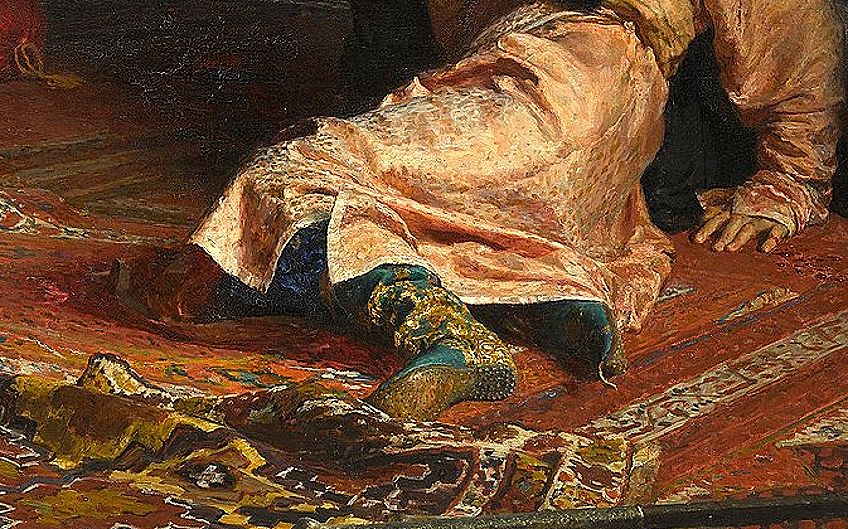
The staff in the lower left foreground creates a strong diagonal and straight line, which contrasts with the more fluid and curved lines creating the two figures. The patterns on the rugs are also created from various short and long diagonal and curved lines. Lines are also utilized strategically, to draw attention to the focal points of the composition, and in the Ivan the Terrible painting, attention is drawn by the placement of the two figures in the center and the staff in the foreground.
Shape and Form
Shape and form are close relatives of lines in art, as mentioned above because these are created from lines. For example, a square shape will be made from two vertical and two horizontal lines. As there are different types of lines, there are also different types of shapes and forms, which are also described as organic or geometric. In Ivan the Terrible painting by Ilya Repin, organic forms come across in the two central father and son figures.
Their bodies are curved and in a naturalistic pose, as you would expect when someone is hunched over cradling someone else lying on the floor.
Geometric shapes occur in the objects around the figures, for example, the rectangular shape of the window in the upper left corner of the mirror on the back wall. The box-like shape of the overturned thrown to the left as well as the different chests against the back wall.

Additionally, notice the square-like, almost zig-zag shapes on the rugs, which provide it with its patterns. And lest we forget, the diamond shapes on the back wall, which provide further richness to the interior setting depicted here. As much as some of these items mentioned are in the shadowy background, they nonetheless provide the composition with character.
Space
Space in artworks like paintings can be portrayed in numerous ways to convey a variety of perspectives or impressions of depth, which is related to the idea of three-dimensionality on a two-dimensional surface. In Ivan the Terrible painting, Ilya Repin depicts an interior space and creates atmospheric effects through contrasts of light and shadows.
The light in the foreground emphasizes the central space taken up by the two figures and coupled with the shadowy background and blurred depiction of the subject matter, a sense of depth is indicated.

The two figures are not in our, the viewers’, immediate foreground, and there is an open space here taken up by the staff, which can almost be seen as a clue given to us about what just occurred, leading our gaze to the middle ground where the two figures are placed.
Ilya Repin’s Point of No Return
Ivan the Terrible and His Son Ivan has been a historical Russian icon of a painting depicting bloodshed and death, but also the rawness inherent in hurting those we love, notably to a point of no return. It was this point of no return that Ilya Repin portrayed in this infamous painting.

This article discussed the “Ivan the Terrible” painting in more detail, answering the inevitable question: “Who is Ivan the Terrible?”, but also what inspired the Russian Realist painter Ilya Repin to paint it, which was largely because of the death of Emperor Alexander II. Beyond the historical context, a formal analysis explored the subject matter and the visual art elements and principles composing this heartfelt yet heartbreaking portrayal of a father and son at the edges of their morals and mortality.
Frequently Asked Questions
Who Created the Ivan the Terrible and His Son Ivan Painting?
The Ivan the Terrible and His Son Ivan (c. 1883 – 1885) is an oil on canvas created by the Russian Realist artist Ilya Yefimovich Repin. It is alternatively titled Ivan the Terrible and His Son Ivan on November 16, 1581.
What Inspired Ilya Repin to Paint Ivan the Terrible?
Ilya Repin, who painted Ivan the Terrible and His Son Ivan (c. 1883 – 1885), was reportedly influenced by several social and political occurrences that contributed to this painting’s creation. These included the death of the Russian Emperor Alexander II, bullfighting in Spain during his travels, and the musical compositions of Nikolai Andreyevich Rimsky-Korsakov.
What Is One of Ilya Repin’s Most Controversial Russian History Paintings?
The Russian painter Ilya Repin was known for his realistic portrayals, notably genre, historical, and portrait paintings. It was his Ivan the Terrible and His Son Ivan (c. 1883 – 1885) painting that evoked controversy because of its brutal and bloody depiction, and that it was regarded as possibly being anti-Russian.
Who Is Ivan the Terrible?
Ivan the Terrible, otherwise Ivan IV Vasilyevich or Ivan Grozny, was the Tsar of Russia, active from 1547 to 1584. He was an infamous figure in Russian history and known for his so-called aggression in his goals to expand Russia.
Alicia du Plessis is a multidisciplinary writer. She completed her Bachelor of Arts degree, majoring in Art History and Classical Civilization, as well as two Honors, namely, in Art History and Education and Development, at the University of KwaZulu-Natal, South Africa. For her main Honors project in Art History, she explored perceptions of the San Bushmen’s identity and the concept of the “Other”. She has also looked at the use of photography in art and how it has been used to portray people’s lives.
Alicia’s other areas of interest in Art History include the process of writing about Art History and how to analyze paintings. Some of her favorite art movements include Impressionism and German Expressionism. She is yet to complete her Masters in Art History (she would like to do this abroad in Europe) having given it some time to first develop more professional experience with the interest to one day lecture it too.
Alicia has been working for artincontext.com since 2021 as an author and art history expert. She has specialized in painting analysis and is covering most of our painting analysis.
Learn more about Alicia du Plessis and the Art in Context Team.
Cite this Article
Alicia, du Plessis, ““Ivan the Terrible and His Son” by Ilya Repin – An Analysis.” Art in Context. May 26, 2023. URL: https://artincontext.org/ivan-the-terrible-and-his-son-by-ilya-repin/
du Plessis, A. (2023, 26 May). “Ivan the Terrible and His Son” by Ilya Repin – An Analysis. Art in Context. https://artincontext.org/ivan-the-terrible-and-his-son-by-ilya-repin/
du Plessis, Alicia. ““Ivan the Terrible and His Son” by Ilya Repin – An Analysis.” Art in Context, May 26, 2023. https://artincontext.org/ivan-the-terrible-and-his-son-by-ilya-repin/.




